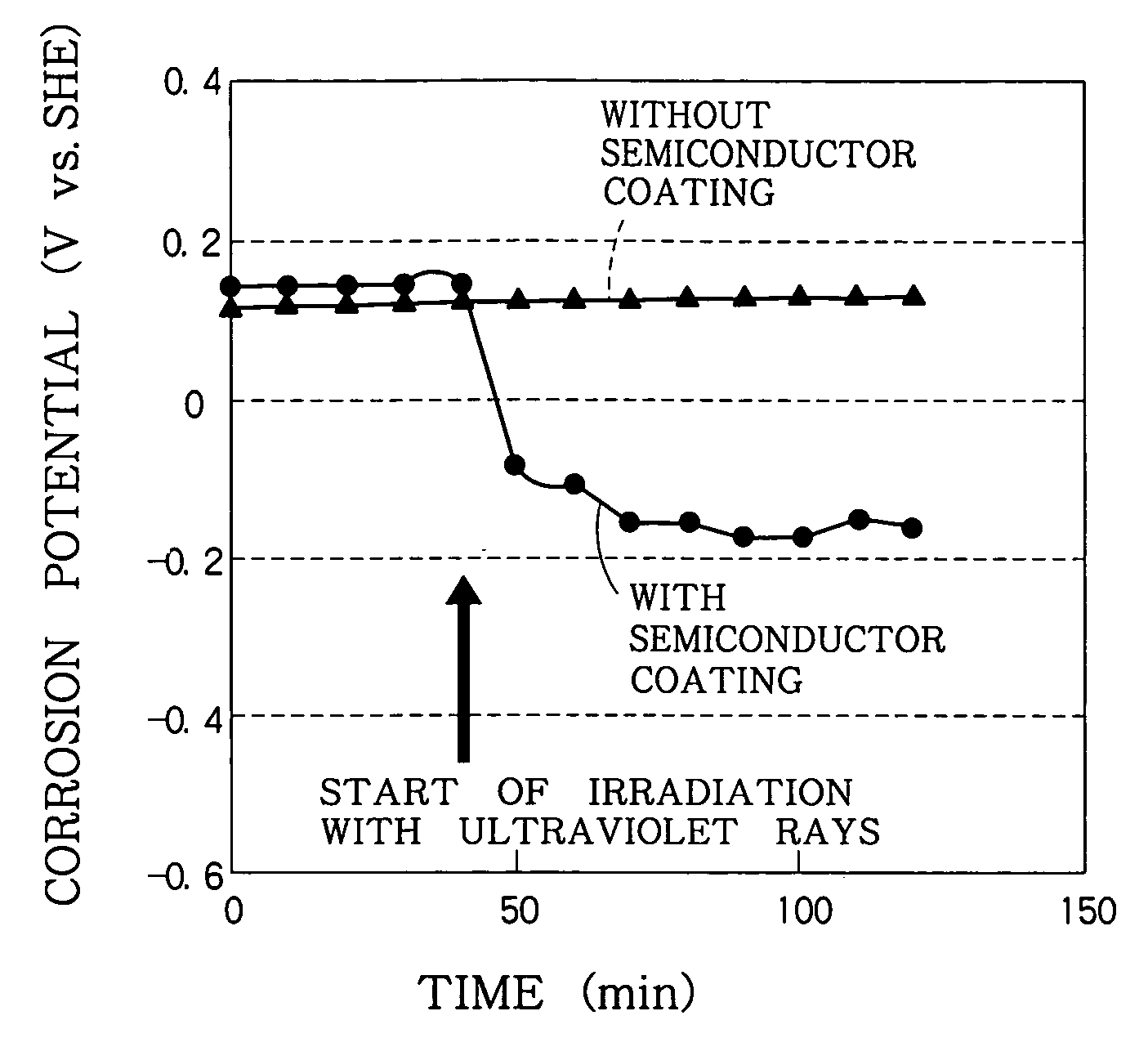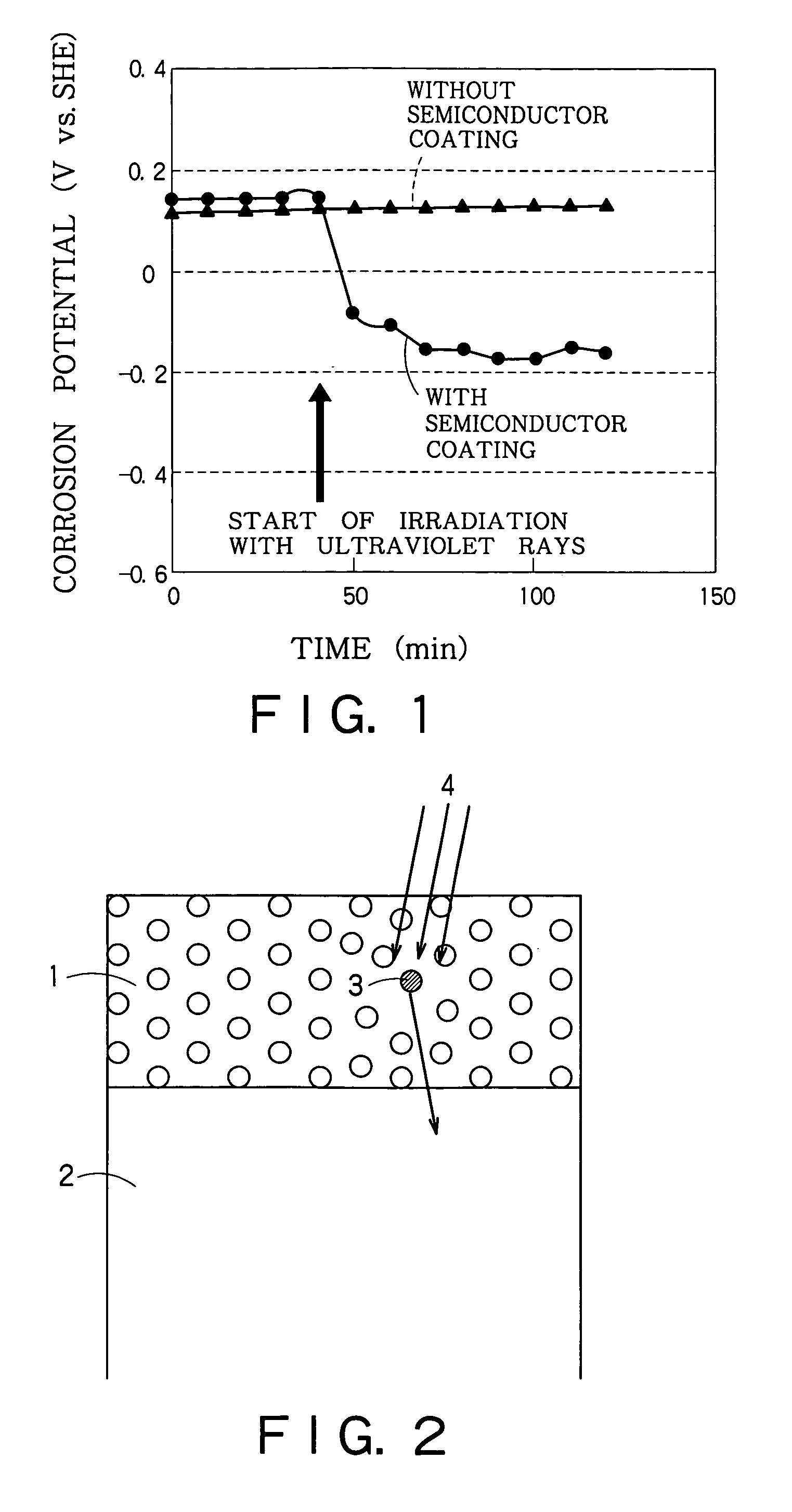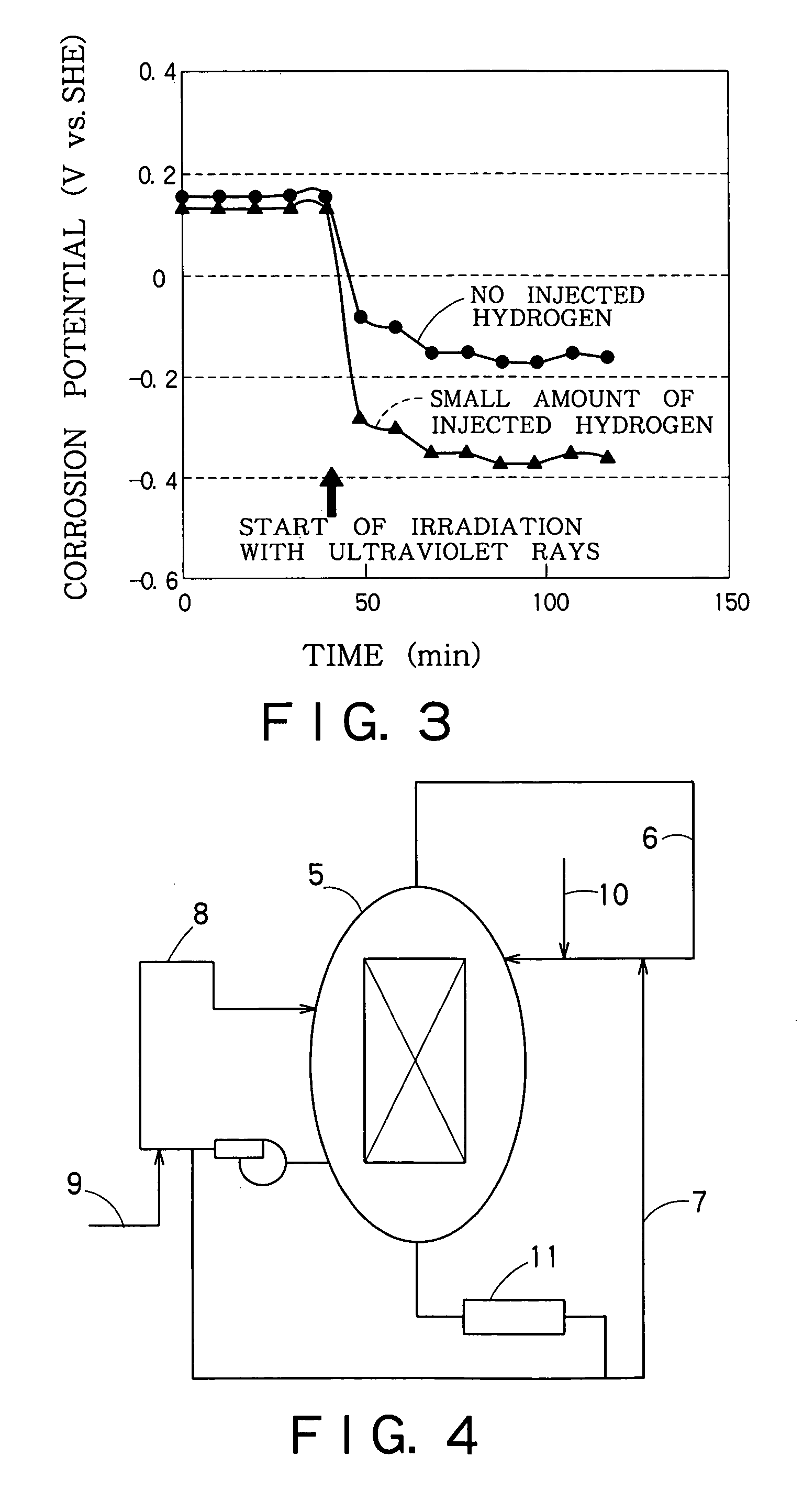Reactor structural member and method of suppressing corrosion of the same
a technology of structural members and reactors, applied in nuclear elements, nuclear engineering problems, greenhouse gas reduction, etc., can solve the problems of significant promotion of oxidation and hydrogenation of fuel materials, and achieve the effects of reducing the potential of the member, and increasing the hydrogen concentration of water
- Summary
- Abstract
- Description
- Claims
- Application Information
AI Technical Summary
Benefits of technology
Problems solved by technology
Method used
Image
Examples
Embodiment Construction
[0053]Generally, the iron concentration of feed water in BWR power plants in Japan is several hundreds parts per trillion (ppt) or above and in BWR power plants in America is 1000 ppt or above. Therefore, the amount of a noble metal per unit area necessary to stably control the potential of the structural members of the primary system of a nuclear reactor is several micrograms per square centimeters or above and hence one BWR needs several kilograms of a noble metal.
[0054]When any particles of corrosion products do not deposit from the reactor water on the surfaces of the structural members of the primary system, the necessary amount of a noble metal per unit area is on the order of 0.1 μg / cm2 and hence one BWR needs 100 g or below of a noble metal. Therefore, the amount of the noble metal that adheres to the fuel can be reduced to 1 / 10 of the amount of the noble metal necessary when particles of corrosion products deposit on the surfaces of the structural members of the primary sys...
PUM
| Property | Measurement | Unit |
|---|---|---|
| thickness | aaaaa | aaaaa |
| molar ratio | aaaaa | aaaaa |
| thickness | aaaaa | aaaaa |
Abstract
Description
Claims
Application Information
 Login to View More
Login to View More - R&D
- Intellectual Property
- Life Sciences
- Materials
- Tech Scout
- Unparalleled Data Quality
- Higher Quality Content
- 60% Fewer Hallucinations
Browse by: Latest US Patents, China's latest patents, Technical Efficacy Thesaurus, Application Domain, Technology Topic, Popular Technical Reports.
© 2025 PatSnap. All rights reserved.Legal|Privacy policy|Modern Slavery Act Transparency Statement|Sitemap|About US| Contact US: help@patsnap.com



